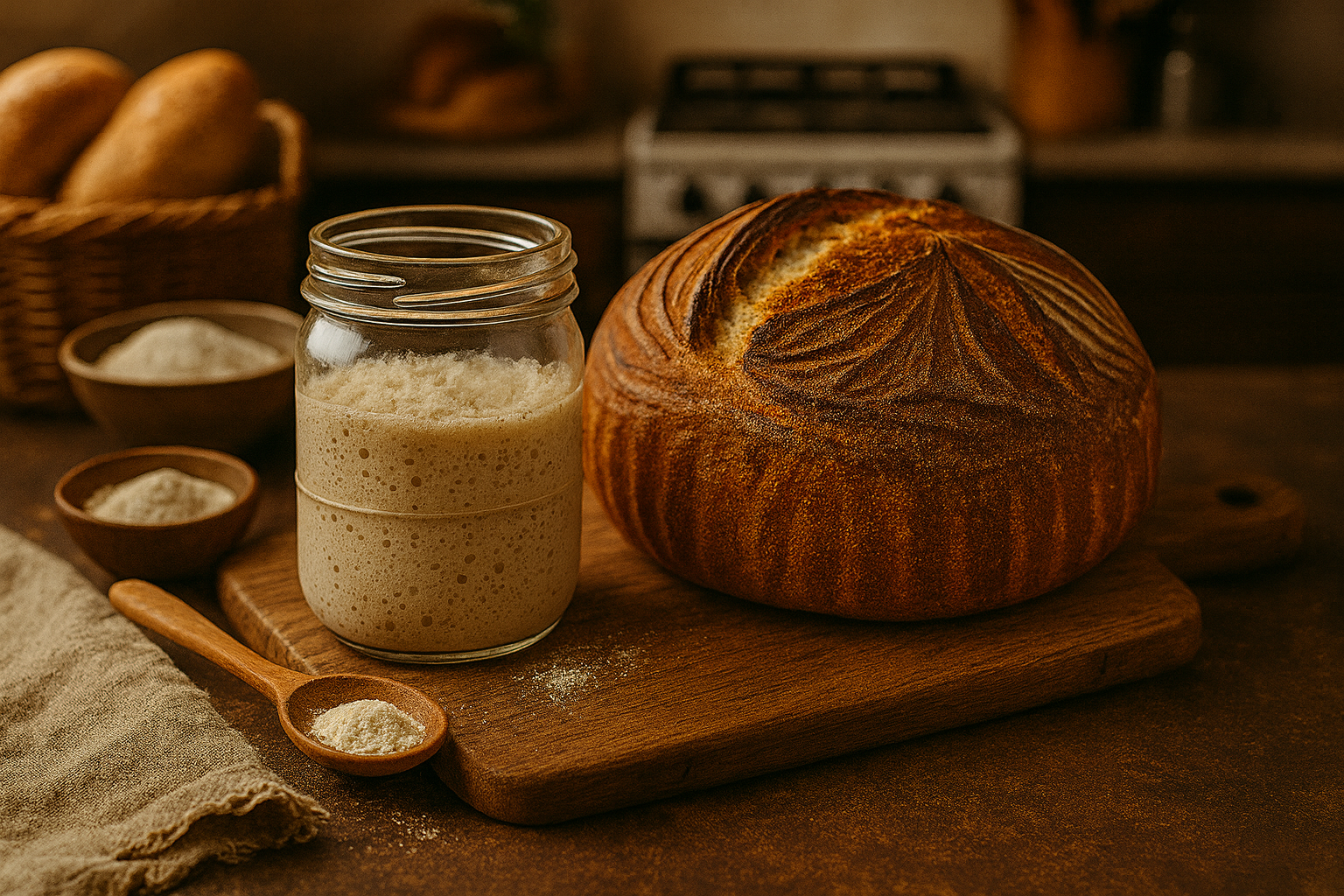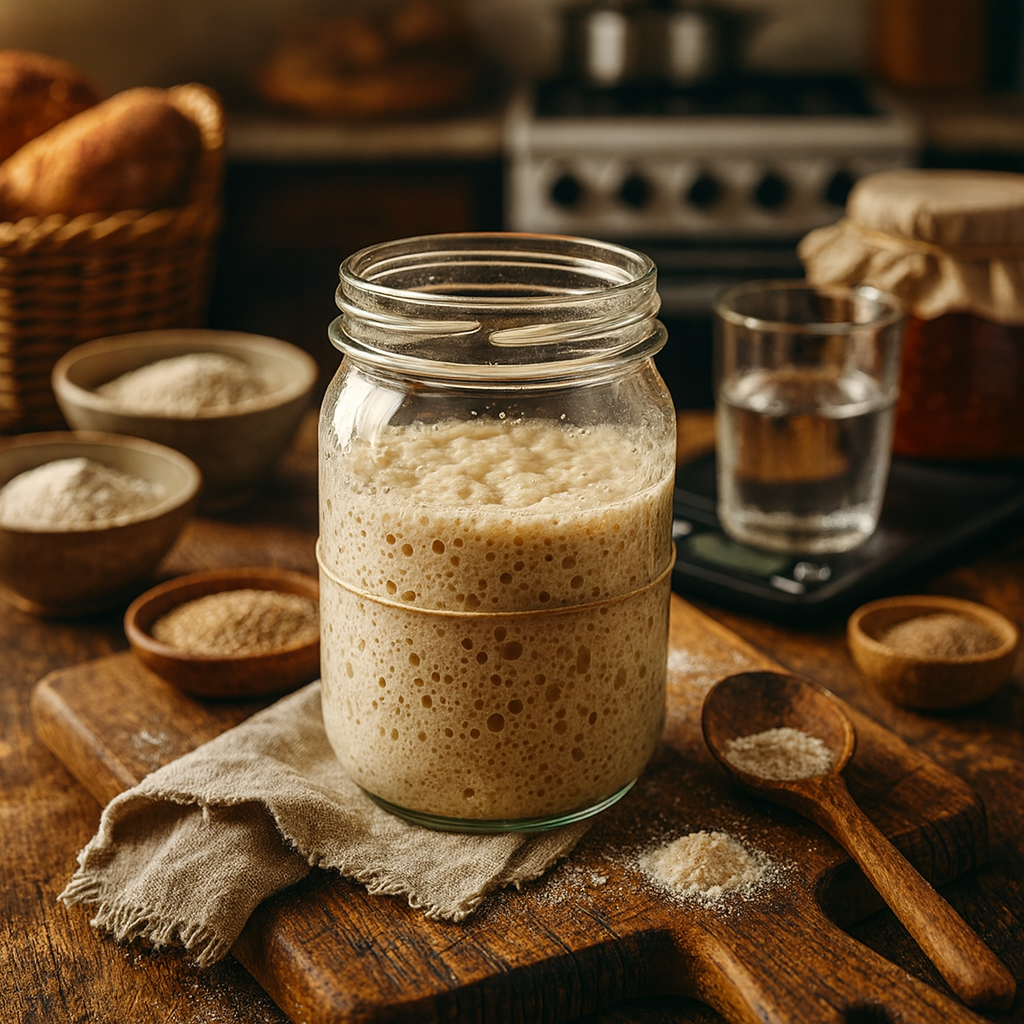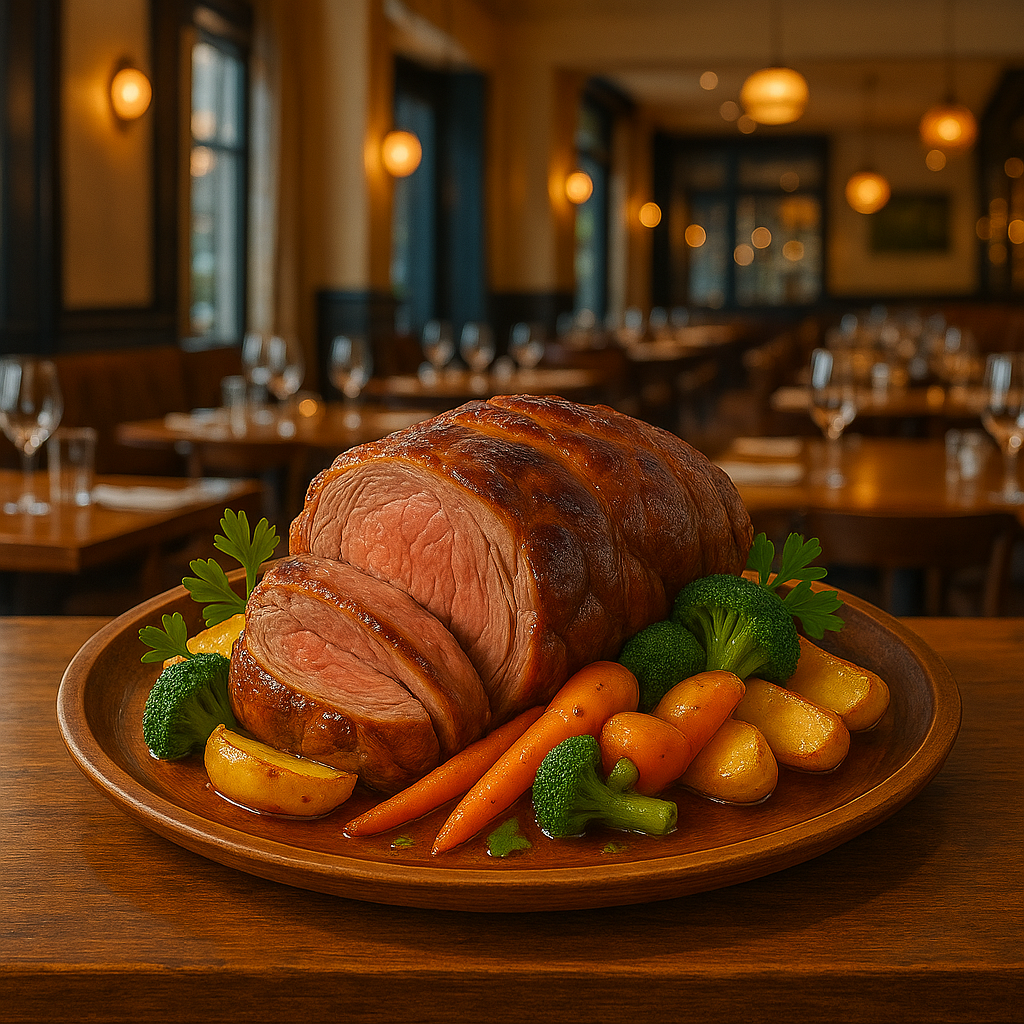Table of Contents
Introduction to British Cuisine
Traditional British cuisine represents a tapestry woven from centuries of history, agricultural practices, and cultural exchanges. Influenced by regional ingredients and foreign interactions, British culinary tradition has evolved to embrace both simplicity and sophistication, showcasing a range of flavors that define its rich gastronomic landscape. To delve into British cuisine is to embark on a journey through its past, appreciating how each dish tells a story of the nation’s diverse heritage.
British cuisine’s evolution can be traced back to medieval times when local produce and livestock formed the foundation of the diet. Agricultural practices, largely dictated by the island’s temperate climate, saw an abundance of root vegetables, grains, and livestock. Over time, these fundamental ingredients formed the basis of quintessential British dishes such as the hearty shepherd’s pie or the comforting Sunday roast, which have become staples of the British dining table.
The Industrial Revolution marked a transformative era for British culinary practices. Urbanization and advances in transportation introduced new ingredients and cooking techniques from various parts of the British Empire, enriching the culinary repertoire. Spices, teas, and exotic fruits became accessible, adding depth and complexity to traditional dishes. This exchange of culinary practices not only diversified British cuisine but also underscored the importance of adapting and embracing global influences.
Social customs and traditions have also played a significant role in shaping British cuisine. The ritual of afternoon tea, with its delicate pastries and finger sandwiches, reflects the nation’s appreciation for leisure and refinement. Similarly, the beloved full English breakfast and the practice of enjoying a Christmas pudding highlight how communal dining experiences foster a sense of belonging and continuity among generations.
To fully appreciate British culture, one must engage with its culinary offerings. Sampling traditional British dishes provides an immersive experience, allowing one to taste the history and traditions that have shaped the nation’s identity. It is through these time-honored recipes that one can truly savor the essence of British heritage.
Full English Breakfast

The Full English Breakfast is an iconic culinary institution in Britain, offering a hearty start to the day with a delectable assortment of ingredients. The typical platter includes eggs, which are usually fried but may also be scrambled or poached, providing a rich source of protein and a creamy texture. Bacon, a staple in many British households, adds a savory, salty element that complements the other components perfectly.
Alongside the eggs and bacon, sausages are a must-have, often made from pork and seasoned with a blend of herbs and spices that enhance their flavor. Baked beans, usually served hot in a tomato sauce, add a hint of sweetness and provide a pleasing contrast to the savory meats. Sautéed mushrooms are an essential part of the breakfast, offering an earthy taste that balances the richness of the dish.
The meal wouldn’t be complete without tomatoes—either grilled or lightly fried—which contribute both color and flavor. Toast or fried bread serves as the carbohydrate component, absorbing the various juices and flavors, making each bite even more enjoyable.
Several regional variations exist, highlighting the diversity within the United Kingdom. For instance, in Scotland, the breakfast might include black pudding and tattie scones, while in Wales, laverbread is a common addition. Each region brings its unique twist to the traditional dish, proving its adaptability and enduring popularity across the nation.
The cultural significance of the Full English Breakfast cannot be overstated. It has moved beyond a mere meal to become a symbol of British hospitality and comfort. Whether enjoyed in a cozy home kitchen or a bustling café, this breakfast provides a sense of community and continuity that resonates deeply with the British people.
Fish and Chips

Fish and Chips hold a prestigious place in British culinary heritage, often regarded as the nation’s staple dish. This quintessentially British meal features a combination of deep-fried fish cloaked in a crunchy batter and thick, golden fries that attract food lovers from around the world. The origin of Fish and Chips can be traced back to the mid-19th century, a time when industrialization drove workers to seek quick, hearty meals. Over time, this dish not only satisfied the masses but became emblematic of British culture.
Traditionally, the choice of fish for this iconic dish has been cod; its mild flavor and flaky texture work perfectly with the crispy batter. However, haddock is another popular option, offering a slightly sweeter taste. Some regions also favor plaice or even skate, depending on local availability and preferences. Regardless of the type, the fish should be fresh and of high quality to ensure the best results.
Several Fish and Chips shops, also known as chippies, have achieved legendary status. Notable establishments such as The Magpie Café in Whitby, known for using locally sourced seafood, and Harry Ramsden’s, which began in a small wooden hut in 1928 and grew into a renowned brand, are prime examples. These chippies have elevated Fish and Chips from a simple comfort food to a celebrated delicacy.
Fish and Chips are often served with mushy peas, a side dish made from marrowfat peas soaked and simmered until they reach a creamy consistency. This tradition adds a unique flavor dimension and complements the main dish perfectly. Additional condiments such as tartar sauce, malt vinegar, and pickled onions are also commonly served, providing a tangy counterpart to the rich, fried components.
The timeless appeal of Fish and Chips lies in its simplicity and satisfying taste, making it a must-try dish for anyone seeking to experience the essence of British cuisine.
Shepherd’s Pie and Cottage Pie
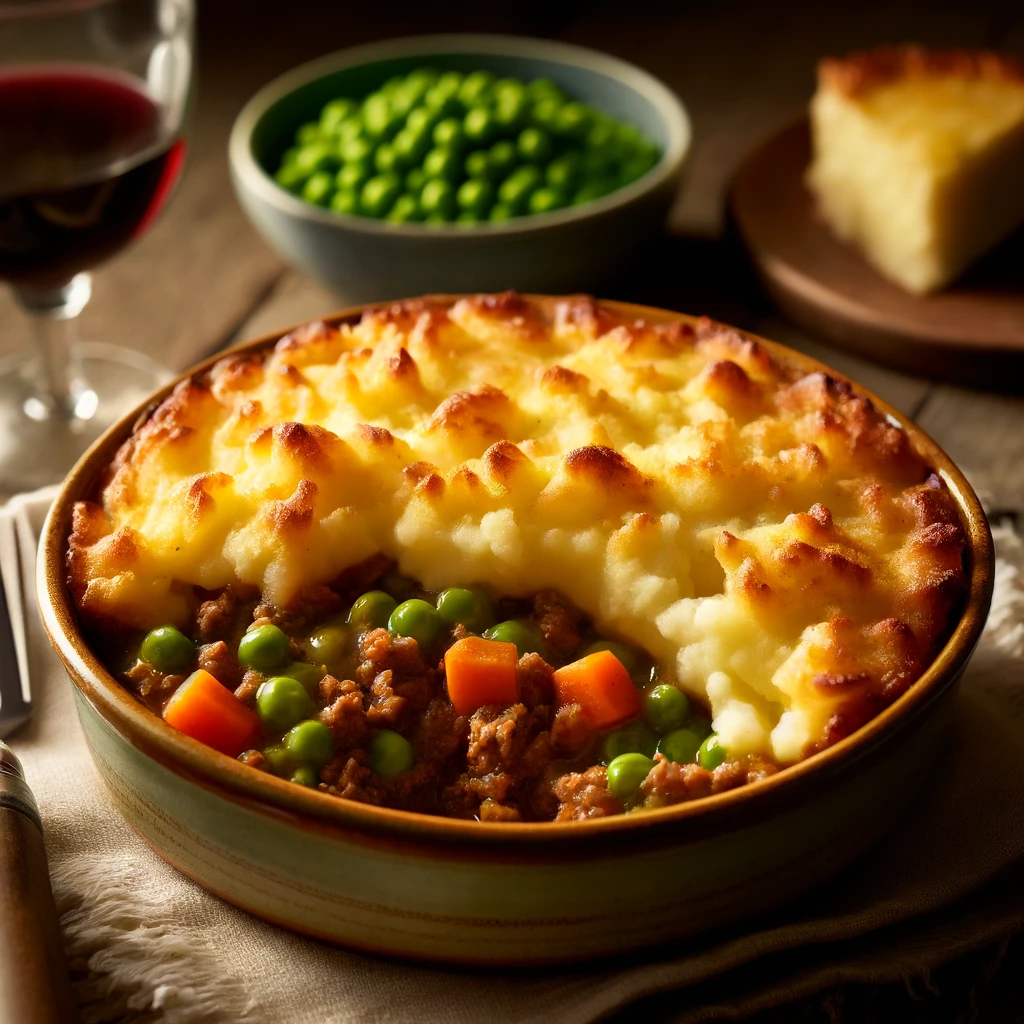
Shepherd’s Pie and Cottage Pie are iconic staples of British cuisine, synonymous with warmth and hearty flavor. These quintessential comfort foods feature a savory minced meat filling, crowned with a generous layer of creamy mashed potatoes, then baked to perfection. While both dishes share a similar preparation method, the primary distinction lies in the meat used. Shepherd’s Pie traditionally calls for lamb, whereas Cottage Pie utilizes beef. This subtle difference underscores the regional variations in British cooking, crafting unique flavors that reflect the ingredients available.
The origins of these beloved dishes can be traced back to the 18th century, where they served as practical meals for utilizing leftover roast meat. Historically, the term “cottage” suggested a modest dwelling for rural workers, who often shepherded sheep – hence the names Shepherd’s Pie and Cottage Pie. Over time, these dishes evolved from simple leftovers to cherished recipes celebrated across the United Kingdom.
At the heart of both pies is the rich, meat-based filling. For Shepherd’s Pie, minced lamb is typically seasoned with onions, carrots, peas, and a robust gravy to create a deeply flavorful base. Cottage Pie, alternatively, incorporates beef, rendering a similar hearty essence but with its own distinct taste profile. The crowning glory for both pies is the mashed potato topping, sometimes enriched with butter and cheese, that turns golden and slightly crisp when baked.
Numerous variations of Shepherd’s Pie and Cottage Pie have emerged, catering to diverse palates and dietary preferences. For instance, adventurous cooks might infuse the meat filling with Worcestershire sauce, red wine, or fresh herbs like thyme and rosemary for added complexity. Vegetarian and vegan adaptations also exist, replacing meat with lentils, chickpeas, or other plant-based proteins, ensuring everyone can enjoy these timeless dishes.
For those wishing to prepare these quintessential British pies, here’s a straightforward recipe. Begin by sautéing finely chopped onions, garlic, and root vegetables until softened. Add in the minced lamb or beef and cook until browned. Pour in beef stock, a splash of Worcestershire sauce, and any desired seasonings, then simmer until thickened. Transfer the mixture to a baking dish, top with creamy mashed potatoes, and bake in a preheated oven at 180°C until the top is golden and bubbly. Serve hot, ideally with a side of steamed greens or a simple salad.
In summary, Shepherd’s Pie and Cottage Pie are much more than mere meals; they are a testament to British culinary heritage, embodying the essence of homely, satisfying cooking. Whether you opt for the traditional lamb of Shepherd’s Pie or the beef of Cottage Pie, each bite offers a comforting taste of British tradition
Yorkshire Pudding
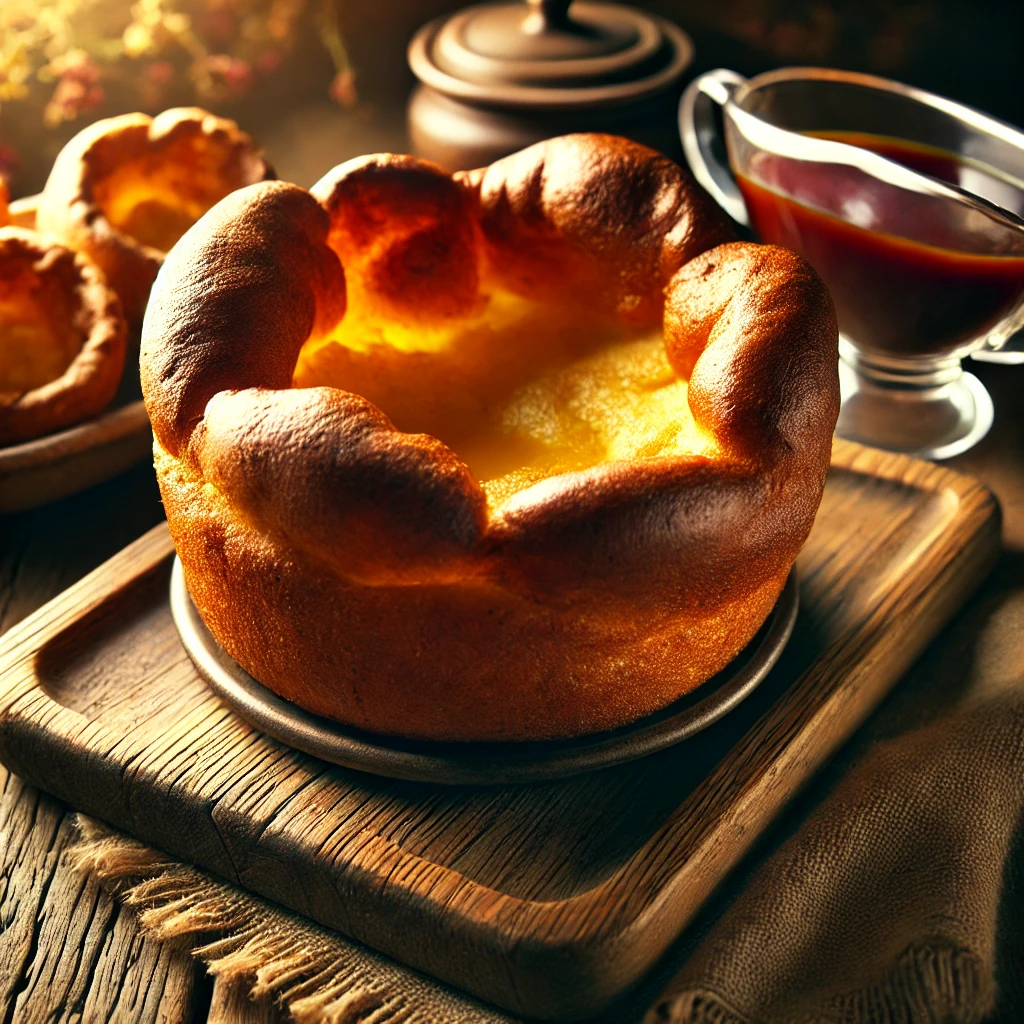
Yorkshire Pudding, a quintessential component of British cuisine, dates back to the early 18th century. Originating from the region of Yorkshire in England, this savory baked pudding is simplicity at its finest, crafted from a humble batter of eggs, flour, and milk or water. The original intent behind the Yorkshire Pudding was to make use of the fat drippings from roasting meat, a resourceful approach in households where nothing went to waste. Though initially served as a starter with a thick gravy to satiate appetites before the main course, it gradually evolved into an iconic accompaniment to roast beef, traditionally a part of the Sunday roast.
The Sunday Roast
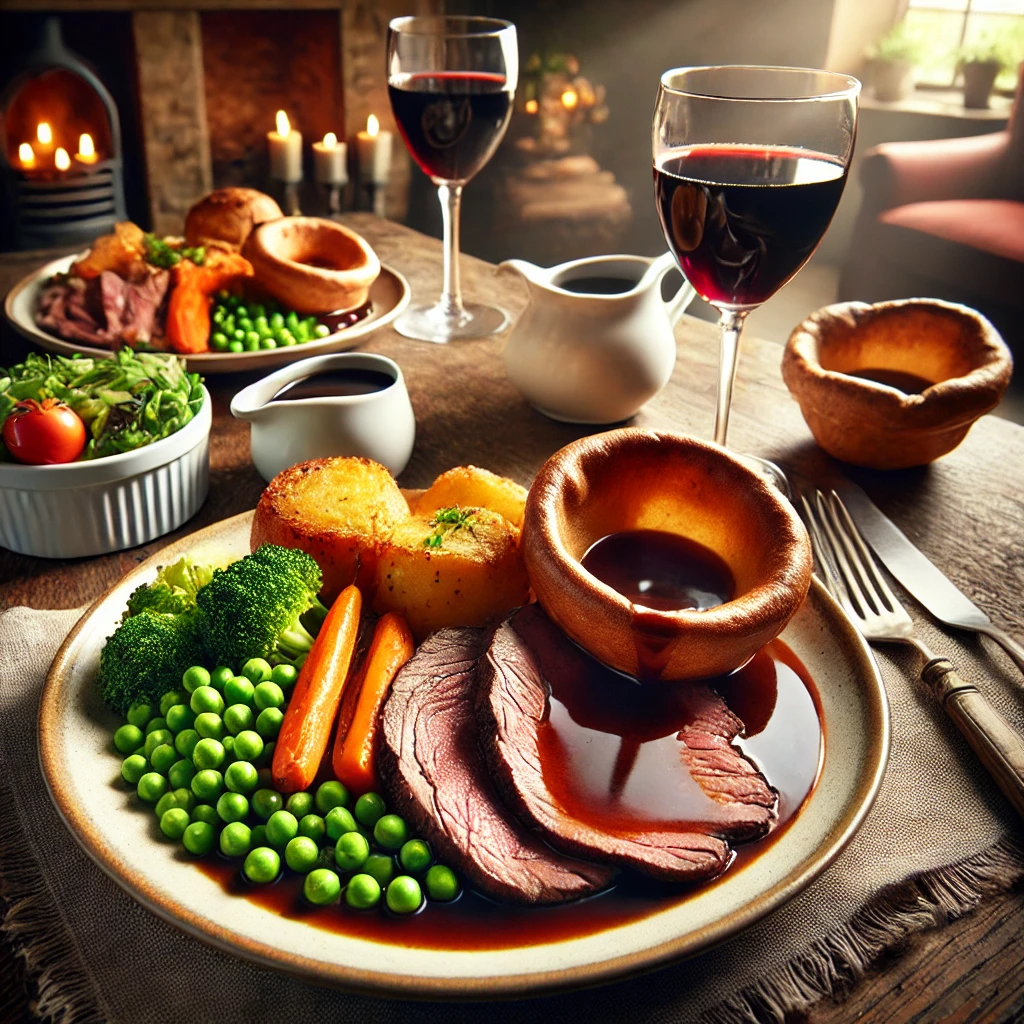
The Sunday roast, a staple of British culinary tradition, finds its roots in medieval times when villagers would place a joint of meat on the spit to roast in the communal oven before going to church. Yorkshire Pudding became synonymous with this roast, soaking up the rich meat drippings and providing a delightful contrast in texture and flavor. The crisp outer shell and airy, slightly doughy interior make for a textural delight that complements the tender roast beef and savory gravy.
To make the perfect Yorkshire Pudding, a combination of a few simple tips can make a significant difference. Ensure that your batter rests for at least 30 minutes before baking, allowing the gluten to relax and the starch to absorb more liquid, resulting in a higher rise. Preheat your oven to a high temperature and pour the batter into very hot oil or fat—this causes an immediate rise and prevents the pudding from becoming soggy. Maintain a consistent heat and avoid opening the oven during baking to keep the puddings from deflating.
While traditionally served with roast beef, Yorkshire Pudding has found versatility in modern culinary applications. They can be served as a side dish with various meats or even filled with sausages and vegetables for a hearty meal. Sweet variations, though less common, involve incorporating ingredients like sugar and vanilla, transforming the pudding into a dessert. The adaptability of Yorkshire Pudding, both in its traditional form and its modern interpretations, ensures its continued prominence in British kitchens and dining tables.
The Cornish Pastry

The Cornish Pasty is a quintessential British pastry that has deep roots in the rich mining history of Cornwall. Traditionally, the Cornish Pasty was a hearty, handheld meal designed for Cornish miners who needed a robust, portable, and nourishing option to sustain them during long hours underground. Encased in a golden, flaky pastry, the typical filling includes diced beef, potatoes, swedes (rutabagas), and onions—all seasoned with a pinch of salt and pepper. This practical and nourishing pastry allowed miners to enjoy a warm meal at work, often using the thick crimped edges as a handle, enabling them to eat without dirtying the main part of the pasty.
Origins and Cultural Significance
Historically, the Cornish Pasty dates back to the 13th century, though it became most popular during the 18th and 19th centuries with the rise of the Cornish mining industry. The pasty’s significance extends beyond simple sustenance; it symbolizes Cornish identity and heritage. The traditional recipe has been meticulously preserved through generations, manifesting the cultural pride of the Cornish people.
Protected Status
In recognition of its cultural importance and unique characteristics, the Cornish Pasty was granted Protected Geographical Indication (PGI) status by the European Union in 2011. This status safeguards the authentic recipe and mandates that a genuine Cornish Pasty must be made in Cornwall, ensuring that it adheres to the traditional methods and ingredients.
Recipe and Variations
To make a traditional Cornish Pasty, begin with a sturdy shortcrust pastry. Fill it with the classic ingredients of beef, potatoes, swedes, and onions, ensuring they are uncooked to retain their flavor during baking. Crimp the edges to seal the pasty and bake until golden brown. While the traditional recipe persists, modern variations have emerged, including vegetarian alternatives filled with cheese and leek or even sweet versions with apple and cinnamon. These innovations allow the Cornish Pasty to cater to diverse palates while maintaining its robust charm.
Afternoon Tea
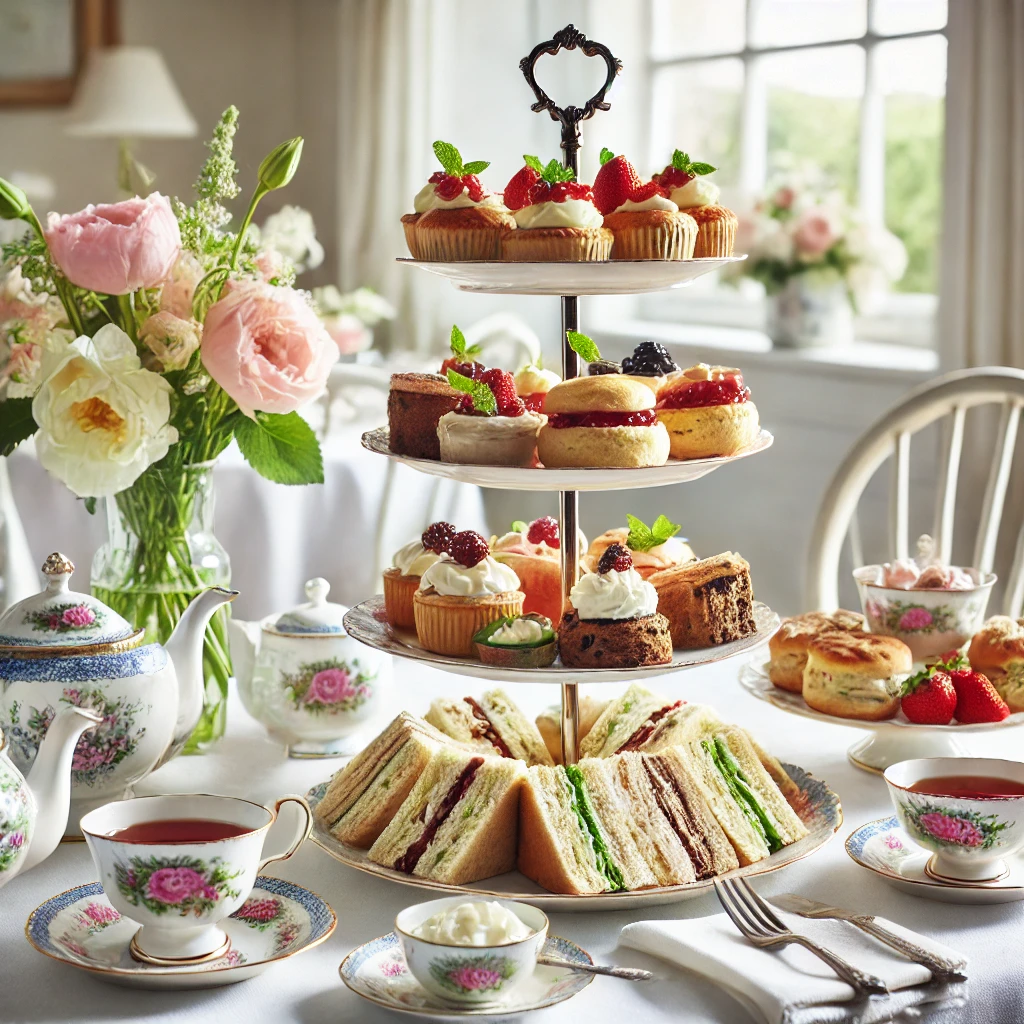
Afternoon Tea is a celebrated British tradition that has been cherished for centuries. Originating in the early 19th century, it was introduced by Anna, the Duchess of Bedford, who found herself feeling peckish during the long gap between lunch and the evening meal. This aristocratic practice quickly gained popularity and became a fashionable social event among the upper classes, eventually spreading throughout the society.
The traditional Afternoon Tea consists of an assortment of teas, often including black tea varieties such as Earl Grey or Darjeeling. Served alongside is a delicate selection of finger sandwiches, typically filled with cucumber, smoked salmon, or egg and cress, epitomizing elegance and refinement. The meal also features scones, a staple of the experience, which are enjoyed with clotted cream and strawberry jam. Complementing the spread are assorted pastries, such as éclairs, fruit tarts, and Victoria Sponge cake, offering a delightful array of flavors and textures.
Today, Afternoon Tea remains a revered occasion, whether enjoyed in a historic tearoom, a luxury hotel, or at home. Hosting an authentic Afternoon Tea involves careful attention to tradition and detail. Begin by selecting a fine-quality tea, served in a porcelain teapot with a matching set of cups and saucers. Use a tiered cake stand to elegantly display the sandwiches, scones, and pastries. To enhance the authenticity, consider adding traditional English decor, such as floral tablecloths and vintage crockery.
Etiquette also plays a vital role in the experience. When pouring tea, remember to offer your guests milk and sugar, allowing them to tailor their tea to their liking. As you enjoy the spread, savor each item slowly, appreciating the subtle flavors and textures that define this timeless British custom. Whether you’re indulging on a weekday afternoon or celebrating a special occasion, Afternoon Tea provides a moment of tranquility and sophistication, perfect for cherishing with friends and family.
Sticky Toffee Pudding

Sticky Toffee Pudding is a quintessential British dessert that has delighted taste buds for generations. This indulgent treat boasts a moist sponge cake, enriched with the natural sweetness of dates, all generously enveloped in a luscious toffee sauce. Often served alongside a scoop of vanilla ice cream or a dollop of custard, it provides a harmonious balance of flavors and textures, making it a staple in British cuisine.
The origins of Sticky Toffee Pudding are somewhat shrouded in mystery, though many attribute its creation to Francis Coulson and Robert Lee at the Sharrow Bay Country House Hotel in the Lake District during the 1970s. However, other claims suggest it may have earlier roots, possibly in Scotland. Despite the ambiguity surrounding its provenance, its widespread popularity across the UK cannot be disputed.
At its core, the traditional recipe for Sticky Toffee Pudding is both simple and sublime. The core ingredients include flour, butter, brown sugar, eggs, and dates. The dates are often softened by soaking them in hot water or coffee, which not only enhances their natural sweetness but also adds moistness to the cake. Once baked to a golden perfection, the sponge cake is then drenched in a rich toffee sauce, typically made from a blend of butter, sugar, and cream.
Over the years, numerous variations on this classic dessert have emerged. Some modern adaptations feature the addition of spices like nutmeg or cinnamon, while others experiment with alternative sweeteners such as honey or maple syrup. For a contemporary twist, some chefs incorporate nuts or dried fruits into the cake batter, adding extra layers of flavor and texture. Despite these innovations, the essence of Sticky Toffee Pudding remains unchanged; it’s a comforting, decadent dessert that retains an enduring appeal.
The continued popularity of Sticky Toffee Pudding can be attributed to its deep-rooted connection to British culinary traditions, as well as its universal appeal as a rich, satisfying dessert. Whether enjoyed in a cozy home setting or at a fine dining establishment, this dessert encapsulates the essence of British hospitality and indulgence.


